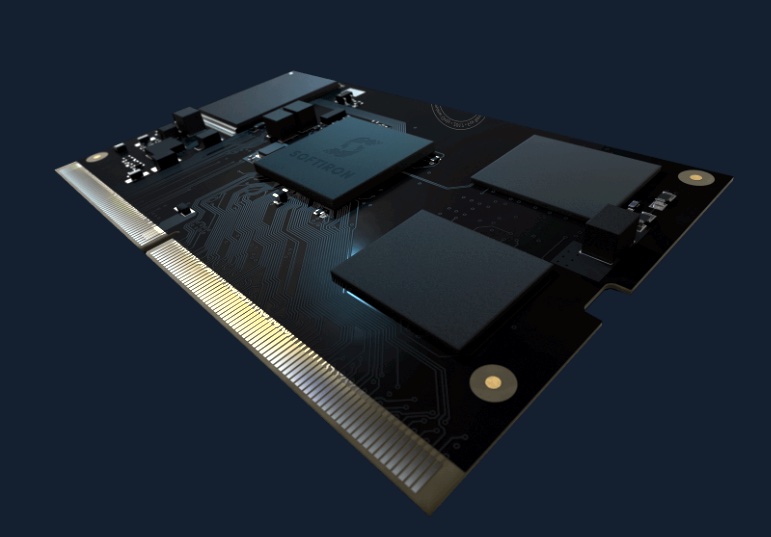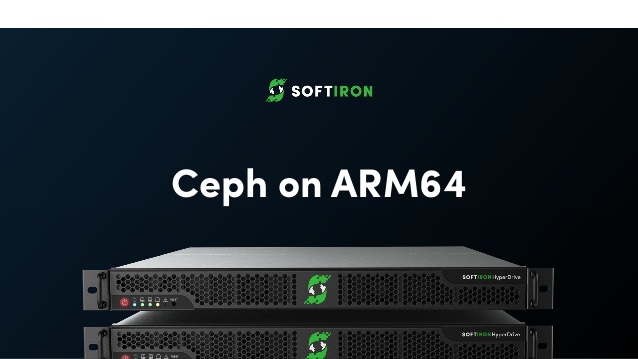Interview SoftIron is developing and building its proprietary ARM-powered HyperDrive storage hardware while strongly promoting Ceph open source storage software.
It seems an unusual combination. SoftIron also thinks Ceph will fulfil a Linux-like destiny in open-source software-defined storage. This is bullish, to say the least.
Curious about both things, I determined to find out more about Softiron and its Ceph-boosting activities.
Here is my interview with Jason Van der Schyff, SoftIron’s VP Operations. His answers are edited for brevity.

B&F: Why was SoftIron founded and by whom?
Van der Schyff: SoftIron was founded in 2012 by Norman Fraser and Phil Straw. The reason for the founding is signalled in the name SoftIron; the idea that hardware, electronics in general and software have anonymous relationships, but if software and hardware are targeted together different results can be achieved. SoftIron can now prove that results are profound on many vectors. SoftIron has manufacturing, performance, reliability, quality, OpEx and cost advantages.
B&F: What is its product development history, please?
Van der Schyff: SoftIron was iconic in the early days of ARM64. SoftIron produced the first production ARM64 server in 2014 and has designed on nearly all early ARM64 silicon that was destined for the data center. In addition, the company has worked on a number of software projects for key people in the ecosystem.
Knowing ARM well, ARM64 developments, all of the silicon available and being involved in the software issues from firmware and all the way through the operating system to workloads, SoftIron knew where all the bones were buried in the ARM64 continuum. With this knowledge, SoftIron spotted first the ability to seed a software-defined storage platform that leverages ARM64.
B&F: Why and when did it set up offices in the USA?
Van der Schyff: From the very founding of the company in 2012, SoftIron was international with initial presences in both the UK and USA. Today, SoftIron’s main technological development is based in Silicon Valley along with core operations and administrative functions, along with a mostly remote Engineering team spanning the UK, and other areas of the USA. The USA is important to us for a few reasons.
Firstly, the proximity to Silicon Valley is an obvious one, but more importantly, from the outset, we were determined to maintain complete control over our production facility so we wanted it in our backyard. It’s a core tenet of ours, that we design and build everything from scratch in California, and this offers our customers complete peace of mind when it comes to knowing their hardware isn’t at risk by being manufactured offshore. Being able to tell our customers that their appliance is made in America is very important to us.

B&F: With HyperDrive you design your own HW to use Ceph. Why not write your own SW?
Van der Schyff: SoftIron does create its own software, and software engineering is the biggest footprint of engineering in the company. From firmware to UEFI, to IPMI and BMC, to Linux distribution, drivers and application and management applications, we target the best experience, control, and security to serve ease of use, performance, and quality.
SoftIron believes that there is a place for its own software when it serves better results for the customer, but the time has come in the world of storage for customer freedom in storage software.
We believe that the application domain belongs in open source, and represents customer choice and freedom. Ceph is quickly becoming the “Linux of storage”. SoftIron is part of that drive and as such joined the founding board of the Ceph Foundation. This marriage of custom targeted hardware and supporting software provides the very best experience, provides true ease of use, performance and a practical platform for enterprise production deployment for a holistic total product.
B&F: Describe the hardware in HyperDrive and the choices you made in using it.
Van der Schyff: HyperDrive is actually a portfolio of products based on a technology platform of mechanical, electronic and software technology developed from the founding of SoftIron. Over the coming years, many products will be produced on this platform.

B&F: Any FPGAs, or ASICs in HyperDrive?
Van der Schyff: Yes, targeted acceleration is an area SoftIron is focused on. Watch this space for both FPGA and ASIC assets. A prime example is HyperCast, a product that does video transcoding using a “sea of ASICs”. This trend will continue across the HyperDrive storage portfolio in time.
B&F: HyperDrive outperforms a Broadwell reference system. What about Skylake?
Van der Schyff: SoftIron has products that outperform Skylake for point to point comparisons for the same architectural reasons as for Broadwell. In Q4’18 a number of new innovations will redefine density and performance in the Ceph space. AMD EPYC based systems and very innovative multiprocessor systems with networking matrix and SDN technology will move the bar in this regard.
B&F: Please compare the pricing of a HyperDrive system vs a reference X86 system.
Van der Schyff: SoftIron is building both ARM64 and X86 products, and the distinction in the end product is usually not delineated by cost but rather by function. SoftIron is focused on the best product that serves the customer, and all customers are different. SoftIron is liberated by its technology platform such that we can make many configurations based on variable components. One of these variables is the processing type.
B&F: How important is Ceph to the storage industry?
Jason: The storage industry has an emerging open source icon – Ceph. In open source, there is a trend; When one or more open source projects get to enterprise feature parity within an existing industry there are usually a number of competing projects that anneal to one or perhaps two areas of traction.
We have seen this with databases (MySQL and SQLite), operating systems (Linux), and web servers (NGINX, Apache) as examples. The storage industry really wants an open source option and we believe that Ceph has reached this credibility. It is the true ‘Swiss Army knife’ of storage with its ability to do block, object and file storage with a focus on consistency and correctness before any other factor. Apache and Linux arguably won because of this approach.
A white paper capturing our thoughts on this matter can be found here.
B&F: How would you compare and contrast Spectrum Scale (GPFS) and Lustre with Ceph?
Van der Schyff: GPFS and Lustre have a distinct sector of their own within the storage market as a whole. Lustre and GPFS are known for scale and performance and they are very good at what they do. Ceph is a more ambitious and wide-ranging storage technology that has a very active and open development community that is involved in many trends of technology that consume storage (and therefore Ceph).
In certain corners of industry GPFS and Lustre are an obvious choice where requirements are distinctly polar. Looking forward many consumers of storage have to make strategic and not polar choices on storage technology. Federated data lakes, technology leverage and consolidated support and operations are possible with Ceph. With a targeted hardware platform with portfolio choices with targeted acceleration will blur the void between these worlds.
B&F: Where do you think the most storage innovation is taking place?
Van der Schyff: Storage media innovation is rapid and very competitive. Technologies like 3D flash are showing densities that rival spinning media but with a quantum leap in performance. Quietly, the hard drive vendors have to stay relevant and are doing some impressive work, although this is not popular press.
Open Source is starting to become an ever more credible way of doing scale and enterprise storage. Ceph is arguably one of the widest ranging and fastest moving projects in this space.
B&F: What does the Ceph roadmap look like?
Van der Schyff: It is very active, moving very fast in terms of feature enhancements and has a focus on improved ease of use through management, containerization, and performance increases in areas like CephFS. The Ceph community is very active, at both an individual and organisational level, with a very focused and competent leadership group.
B&F: What are the near- and mid-term goals for SoftIron?
Van der Schyff: Build out a portfolio of HyperDrive products. Fill out other areas of our technology platform and make the very best Ceph product we can, and serve our customers on their terms. Also, as evidenced by our joining the Ceph Foundation, we look forward to leading – and contributing to – the future of Ceph, and demonstrating its undeniable role in delivering world-class enterprise storage solutions.
B&F: How many staff does it have and is new funding being sought?
Van der Schyff: The company is small but with a presence in the United Kingdom and the United States. The company is aggressively scaling, and we expect to double in size over the next 12 months. SoftIron is currently closing an investment round of growth capital.








